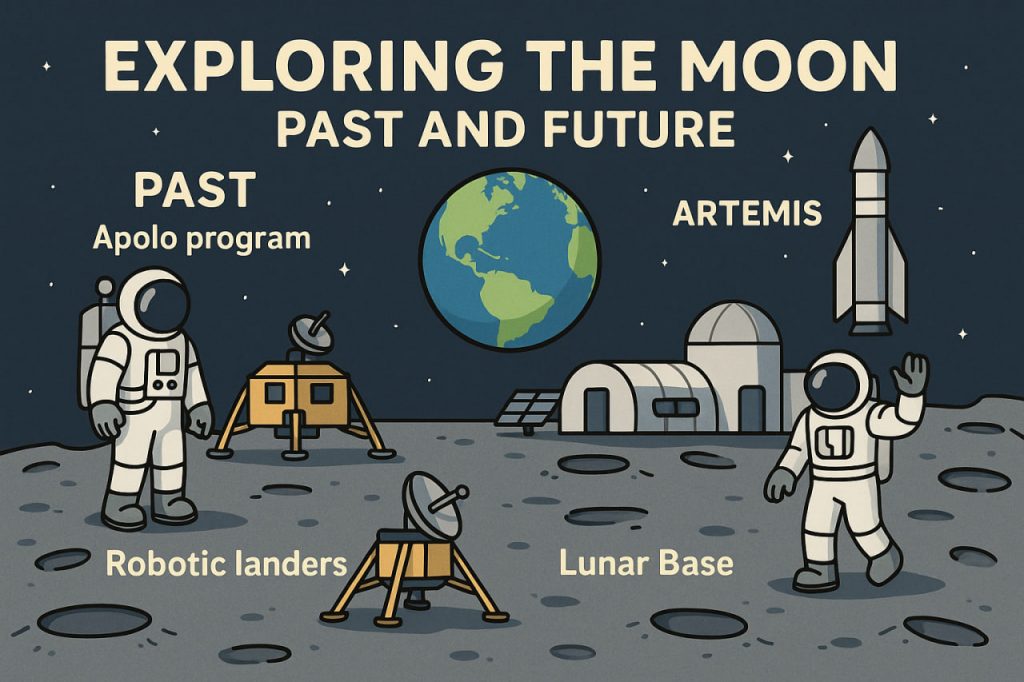For centuries, the Moon has fascinated humanity. As Earth’s only natural satellite and the brightest object in our night sky, it has been central to ancient myths, scientific curiosity, and space exploration. From the first robotic missions to future lunar bases, the Moon remains a vital focus for global space agencies.
Early Lunar Exploration
First Observations and Theories
Before the space age, astronomers studied the Moon using telescopes. Galileo Galilei was among the first to sketch its cratered surface in the 1600s, challenging the idea that celestial bodies were smooth and perfect.
Robotic Missions
The Soviet Luna program was the first to reach the Moon in 1959. Luna 2 became the first human-made object to impact the Moon, while Luna 3 sent back the first photos of its far side. The United States followed with the Ranger and Surveyor missions, which provided detailed surface data.
Apollo Program (1961–1972)
NASA’s Apollo missions remain the most iconic lunar achievements. In 1969, Apollo 11 delivered Neil Armstrong and Buzz Aldrin to the Moon’s surface, with Armstrong famously declaring, “That’s one small step for man, one giant leap for mankind.” Six crewed missions landed in total, collecting over 380 kilograms of lunar rock and soil.
Scientific Discoveries from the Moon
Lunar Geology
Samples revealed the Moon’s volcanic and impact history, and its crust, mantle, and core structure. Craters, lava plains (maria), and highlands tell the story of early solar system formation.
Water Ice and Resources
Recent missions like India’s Chandrayaan-1 and NASA’s LCROSS found evidence of water ice at the lunar poles, offering potential for life support and fuel production in future missions.
Seismic Activity
Apollo missions placed seismometers on the surface, detecting moonquakes and helping scientists understand internal lunar structure.
Modern and Future Lunar Missions
Renewed Global Interest
Countries including China, India, the U.S., and private companies are now competing and collaborating in lunar exploration. China’s Chang’e program has successfully landed rovers and returned samples from the far side of the Moon.
NASA’s Artemis Program
Artemis aims to return humans to the Moon by the late 2020s, including the first woman and first person of color. It also plans to establish the Lunar Gateway — a space station orbiting the Moon — and prepare for human missions to Mars.
Commercial Involvement
Private companies such as SpaceX, Astrobotic, and Blue Origin are contributing to lunar transportation, landers, and infrastructure development.
Lunar Bases and Science Stations
Long-term goals include permanent or semi-permanent lunar habitats, research labs, and industrial facilities. These may serve as stepping-stones for Mars and deep-space exploration.
Glossary
- Lunar geology – The study of the Moon’s physical structure and composition
- Moonquake – A seismic event occurring on the Moon
- Lunar Gateway – A planned space station in orbit around the Moon
- Water ice – Frozen water found in shadowed regions of the Moon
- Lava plains (maria) – Dark, flat areas on the Moon formed by ancient volcanic eruptions


